Table of contents
- Introduction
- The Power of Nature: Exploring the Outdoors
- Classic Outdoor Games for All Ages
- Adventure Awaits: Thrilling Outdoor Activities
- Unleashing Creativity: Outdoor Arts and Crafts
- Gardening Together: Green Thumb Adventures
- Water Fun: Splashing and Swimming Activities
- Exploring Local Treasures: Family-Friendly Outings
- Rainy Day Alternatives: Outdoor Activities Indoors
- Safety First: Tips for a Safe and Enjoyable Outdoor Experience
- Conclusion
- Frequently Asked Questions
Introduction
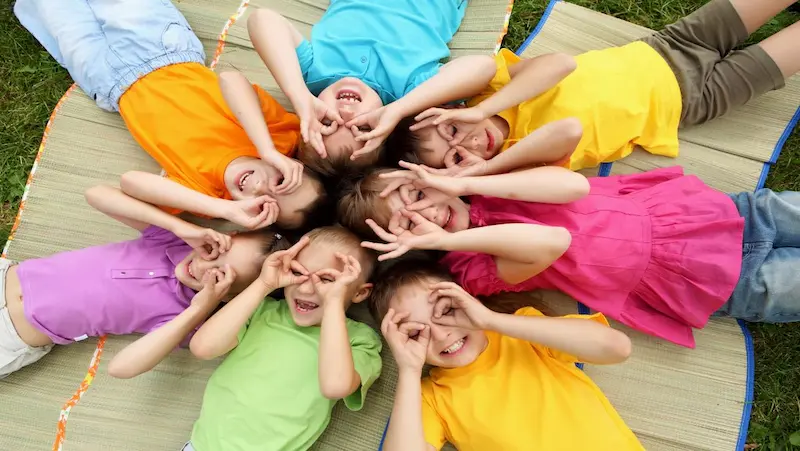
Welcome, readers, to this insightful discussion on the importance of outdoor activities for bonding between kids and parents. In today’s fast-paced world, where technology often dominates our lives, it is crucial to recognize the value of spending quality time outdoors with our children.
Engaging in outdoor play not only nurtures the parent-child relationship but also offers numerous benefits for children’s physical and mental development.
In recent times, children have become increasingly reliant on screens, spending excessive hours in front of televisions, computers, and smartphones. This sedentary lifestyle can hinder their overall growth and well-being. Therefore, it is imperative for parents to encourage and actively participate in outdoor activities to provide their children with a holistic upbringing.
Exploring outdoor adventures together not only strengthens the bond between kids and parents but also allows families to showcase their unique parenting style through shared activities like hiking, camping, and playing sports.Engaging in outdoor adventures fosters positive parenting by allowing kids and parents to connect, learn, and grow together outside the confines of their home.
Beyond the emotional and relational benefits, outdoor activities also contribute significantly to children’s physical and mental development. The natural environment provides ample space for children to engage in unstructured play, allowing them to develop their physical capabilities, balance, coordination, and motor skills. From running, jumping, and climbing to riding bikes or playing team sports, outdoor play offers a wide range of opportunities to enhance children’s physical fitness.
Furthermore, being immersed in nature has a positive impact on children’s mental well-being. It provides an escape from the pressures of school, technology, and the digital world. Outdoor play stimulates their imagination, creativity, and problem-solving abilities, as they interact with the natural elements and engage in imaginative play scenarios. Research has shown that exposure to nature can reduce stress, anxiety, and symptoms of attention deficit hyperactivity disorder (ADHD) in children, promoting their overall mental health.
The Power of Nature: Exploring the Outdoors
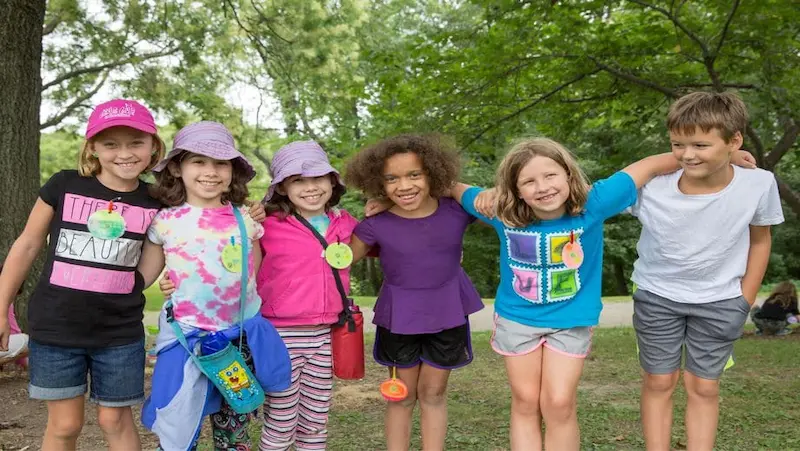
When it comes to strengthening the family bond beyond the confines of home, valuable parenting advice suggests engaging in a variety of outdoor activities that foster meaningful connections between kids and parents.”
Nature has a powerful way of connecting us to ourselves, to each other, and to the world around us. When we spend time in nature, we are surrounded by sights, sounds, smells, and textures that can help us to relax, de-stress, and be more present in the moment. We are also more likely to be physically active, which can boost our mood and overall health.
Engaging in mindfulness activities for kids outdoors can be a wonderful way for parents and children to connect on a deeper level while enjoying the beauty of nature together.
How Connecting with Nature Enhances Family Bonding
Engaging in a variety of outdoor activities for kids is a key component of effective parenting, fostering stronger bonds between kids and parents while creating lasting memories. When families spend time together in nature, they have the opportunity to connect with each other in a different way.
They can talk, laugh, and play together, and they can also learn from each other. Nature can provide a neutral ground where families can come together and simply be together.
There is a growing body of research that suggests that spending time in nature can actually help to strengthen family bonds.
Engaging in outdoor games for kids not only fosters physical growth but also plays a crucial role in enhancing cognitive development in children, making every moment spent beyond four walls an opportunity for learning and bonding between kids and parents. One study found that children who spent more time in nature had stronger relationships with their parents. Another study found that families who went on nature walks together reported feeling closer to each other.
Various Outdoor Environments Suitable for Family Adventures
There are many different outdoor environments that are suitable for family adventures. Some popular options include:
- Parks: Parks are a great place to start exploring nature with kids. They offer a variety of activities, such as walking, biking, playing on the playground, and having a picnic.
- Forests: Forests are another great option for family adventures. They offer a chance to experience the beauty of nature and to learn about different plants and animals.
- Beaches: Beaches are a fun place to spend time with kids. They offer a chance to swim, build sandcastles, and explore the tide pools.
- Mountains: Mountains offer a chance to experience the beauty of nature and to challenge yourself physically. There are many different activities that you can do in the mountains, such as hiking, camping, and skiing.
- Rivers: Rivers offer a chance to experience the power of nature and to have some fun on the water. You can go for a swim, go boating, or go fishing.
Classic Outdoor Games for All Ages

Here are some classic outdoor games that are enjoyable for both kids and parents:
- Tag: This is a simple game that requires no equipment and can be played by people of all ages. To play, one person is “it” and chases the other players. If “it” tags another player, that player becomes “it” and the chase continues.
- Hide-and-seek: This is another classic game that can be played by people of all ages. One person is “it” and closes their eyes while the other players hide. When “it” counts to a certain number, the other players come out of hiding. The first player to find “it” wins.
- Capture the flag: This is a more complex game that requires a playing field with two bases. Each team has a flag at their base. The goal of the game is to capture the other team’s flag and bring it back to your own base. Players can be tagged out by members of the opposing team.
- Marco Polo: This is a fun game that can be played in a pool or any other body of water. One person closes their eyes and says “Marco.” The other players call out “Polo.” The person with their eyes closed tries to tag the other players by listening for their voices.
- Croquet: This is a game of skill that can be played by people of all ages. Players use mallets to hit balls through a series of wickets. The first player to get all of their balls through the wickets wins.
- Kickball: This is a game similar to baseball, but instead of hitting a ball with a bat, players kick it. Players can score points by kicking the ball over the fence or through a certain area of the field.
- Jump rope: This is a great game for exercising and having fun. Players can jump rope individually or in a group. There are many different jump rope games that can be played.
- Red Rover: This is a game that requires a lot of energy. Players line up on opposite sides of a field. One player from each team runs towards the other team and tries to break through the line. If the player is successful, they can bring one of the other team’s players back with them.
Here are some tips for modifying games to accommodate different age groups:
- For younger children, you may want to shorten the playing time or make the playing field smaller.
- You can also simplify the rules of the game or provide more assistance to younger children.
- For older children and adults, you can increase the challenge of the game by making the playing field larger or adding more obstacles.
- You can also make the rules of the game more complex or require more skill.
No matter what age group you are playing with, these classic outdoor games are sure to provide hours of fun. So get outside and enjoy the fresh air and sunshine!
Adventure Awaits: Thrilling Outdoor Activities
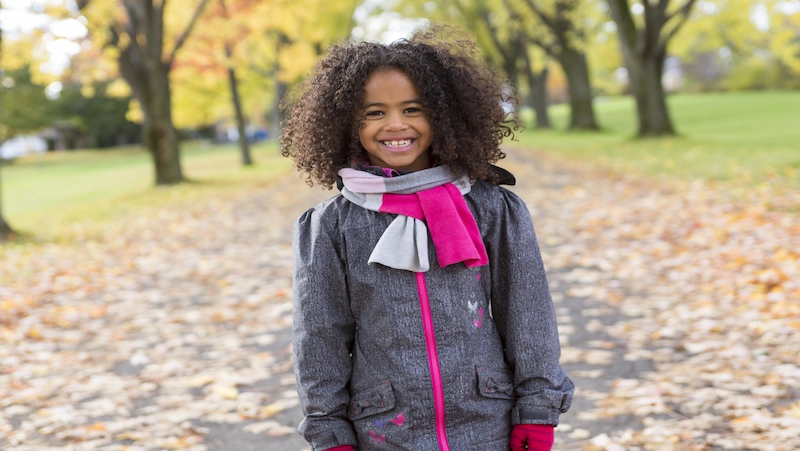
Summer activities for kids can transform ordinary days into memorable adventures, fostering strong family bonds while enjoying the great outdoors. There are many thrilling outdoor activities that families can enjoy together. Here are a few ideas, along with safety guidelines, equipment recommendations, and suggestions for age-appropriate variations:
Hiking
Hiking is a great way to get exercise, enjoy the outdoors, and bond as a family. When hiking with children, it is important to choose trails that are appropriate for their age and fitness level. It is also important to pack plenty of water, snacks, and sunscreen.
- Safety guidelines:
- Stay on the trail and avoid off-trail hiking, which can be dangerous.
- Be aware of your surroundings and watch for hazards such as loose rocks, uneven terrain, and wildlife.
- Bring a first-aid kit in case of an injury.
- Equipment recommendations:
- Hiking boots or shoes with good traction
- Comfortable, breathable clothing
- Sunscreen
- Hat
- Water bottle
- Snacks
- Age-appropriate variations:
- For younger children, shorter hikes with plenty of opportunities to play and explore are a good option.
- For older children, longer hikes and more challenging terrain can be fun.
Camping
Camping is a great way to experience the outdoors and get away from the hustle and bustle of everyday life. When camping with children, it is important to choose a campground that is family-friendly and has amenities such as flush toilets and showers. It is also important to pack plenty of food, water, and other supplies.
- Safety guidelines:
- Be aware of the weather forecast and pack accordingly.
- Bring a fire extinguisher and know how to use it.
- Be aware of your surroundings and watch for hazards such as wildlife and poisonous plants.
- Equipment recommendations:
- Tent
- Sleeping bags
- Sleeping pads
- Stove
- Food
- Water
- First-aid kit
- Age-appropriate variations:
- For younger children, car camping is a good option. This allows them to sleep in their own beds and have access to a bathroom.
- For older children, backpacking is a fun challenge. This requires them to carry their own gear and hike to their campsite.
Biking
Biking is a great way to get exercise, explore the outdoors, and have fun. When biking with children, it is important to choose trails that are appropriate for their age and skill level. It is also important to wear helmets and obey traffic laws.
- Safety guidelines:
- Wear helmets.
- Obey traffic laws.
- Be aware of your surroundings and watch for hazards such as cars, pedestrians, and wildlife.
- Equipment recommendations:
- Bikes that are the appropriate size for the children
- Helmets
- Bike locks
- Age-appropriate variations:
- For younger children, biking on paved trails or in parks is a good option.
- For older children, biking on trails in the woods or on the beach can be fun.
Kayaking
Kayaking is a great way to explore the water and get some exercise. When kayaking with children, it is important to choose a calm body of water and to have the children wear life jackets. It is also important to be aware of the weather forecast and to avoid kayaking in windy or stormy conditions.
- Safety guidelines:
- Wear life jackets.
- Be aware of the weather forecast and avoid kayaking in windy or stormy conditions.
- Stay within your skill level.
- Be aware of your surroundings and watch for hazards such as rocks, currents, and wildlife.
- Equipment recommendations:
- Kayaks that are the appropriate size for the children
- Life jackets
- Age-appropriate variations:
- For younger children, kayaking in calm lakes or ponds is a good option.
- For older children, kayaking in rivers or the ocean can be fun.
These are just a few ideas for thrilling outdoor activities that families can enjoy together. With a little planning, you can have an adventure-filled day that everyone will remember.
Unleashing Creativity: Outdoor Arts and Crafts

Art is a powerful way to express oneself and explore one’s creativity. It can also be a lot of fun! Outdoor arts and crafts are a great way to combine the two.
There are many different types of outdoor arts and crafts that you can do with kids. Some popular options include:
- Nature collages: Collect leaves, flowers, twigs, and other natural materials to create collages. You can use glue, tape, or even your fingers to attach the materials to a piece of paper or canvas.
- Sidewalk chalk art: Use sidewalk chalk to create colorful pictures and designs on the ground. This is a great way to let your imagination run wild!
- Rock painting: Paint rocks with fun designs and patterns. You can then hide them in your yard or neighborhood for others to find.
- Sun prints: Place leaves, flowers, or other natural materials on a piece of paper and expose them to the sun. The sun will bleach the paper, leaving behind a beautiful image of the natural materials.
- Bubble painting: Blow bubbles onto a piece of paper and let them dry. The bubbles will leave behind a colorful, abstract design.
Benefits of Outdoor Arts and Crafts
There are many benefits to doing outdoor arts and crafts with kids. Here are a few of them:
- It promotes imaginative play: When kids are outdoors, they have more space to run around and explore. This can help them to use their imaginations and come up with new ideas.
- It encourages artistic expression: Kids can express themselves creatively through outdoor arts and crafts. They can use their imaginations to create whatever they want.
- It’s a fun way to learn about nature: When kids collect natural materials for their art projects, they learn about different types of plants and animals. They also learn about the importance of protecting nature.
- It’s a great way to get exercise: Outdoor arts and crafts can be a lot of physical activity. Kids have to run around to collect natural materials, and they have to use their muscles to paint, draw, and sculpt.
Tips for Outdoor Arts and Crafts
Here are a few tips for doing outdoor arts and crafts with kids:
- Choose a sunny day: If you’re doing sun prints or bubble painting, you’ll need a sunny day.
- Bring a water bottle: Kids will get thirsty when they’re playing outdoors, so make sure to bring a water bottle.
- Have a variety of materials: Provide kids with a variety of materials to use in their art projects. This will give them more options and allow them to be more creative.
- Let kids explore: Don’t be afraid to let kids explore and experiment with different materials. This is how they’ll learn and grow as artists.
- Have fun! The most important thing is to have fun. If kids are having fun, they’ll be more likely to want to do outdoor arts and crafts again.
Gardening Together: Green Thumb Adventures
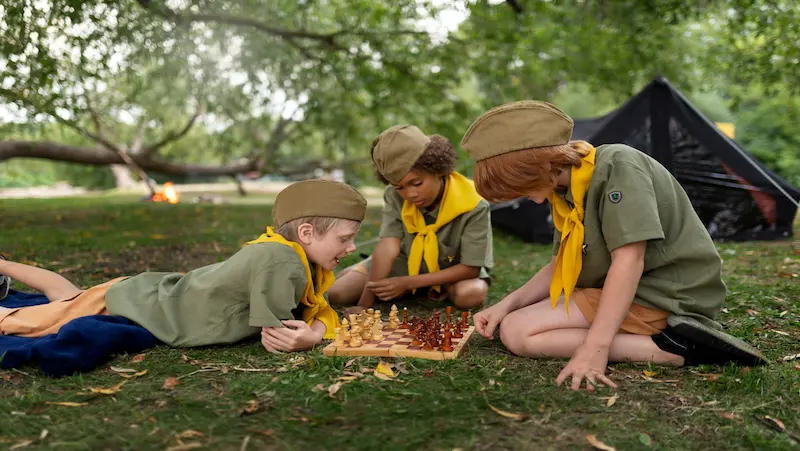
Gardening is a great way for families to connect with each other and the natural world. It’s also a fun and educational activity that can teach kids about science, math, and responsibility.
Here are some of the joys of gardening as a family:
- Spend quality time together. Gardening is a great way to get some exercise and fresh air while spending time with your loved ones. It’s also a great opportunity to talk and catch up, or just enjoy each other’s company in silence.
- Learn about nature. Gardening can help kids learn about the different plants and animals that live in their environment. They’ll also learn about the different stages of plant growth, from seed to seedling to mature plant.
- Develop a sense of responsibility. Gardening teaches kids the importance of taking care of something, from planting the seeds to watering and harvesting the plants. It also teaches them about the consequences of their actions, such as if they don’t water the plants, they won’t grow.
- Enjoy the fruits (and vegetables) of their labor. There’s nothing quite like picking a ripe tomato or a juicy strawberry that you grew yourself. It’s a great feeling of accomplishment, and it’s also a delicious way to eat healthier.
If you’re interested in starting a family garden, here are some step-by-step guides to help you get started:
- Choose a location. The best location for a family garden is a spot that gets plenty of sunlight and has well-drained soil. If you don’t have a yard, you can also plant a container garden on your patio or balcony.
- Plan your garden. Decide what types of plants you want to grow, and how much space you have. You can find garden plans online or in gardening books.
- Prepare the soil. Before you plant your seeds or seedlings, you’ll need to prepare the soil. This involves removing weeds, adding compost or other organic matter, and tilling the soil.
- Plant your seeds or seedlings. Follow the instructions on the seed packet or seedling label to plant your seeds or seedlings at the correct depth and spacing.
- Water and fertilize your plants. Water your plants regularly, especially during hot, dry weather. You may also need to fertilize your plants every few weeks.
- Protect your plants from pests and diseases. Keep an eye out for pests and diseases, and take steps to control them if they occur.
- Harvesting your plants. When your plants are ready to harvest, be sure to do so carefully so as not to damage the plants. Enjoy the fruits (and vegetables) of your labor!
Here are some ideas for engaging kids in gardening activities:
- Let them help you choose the plants. Kids are more likely to be interested in gardening if they have a say in what plants you grow.
- Make it a game. Turn gardening into a game by having kids race to see who can plant the most seeds or water the most plants.
- Let them get creative. Let kids decorate their garden beds with rocks, flowers, or other objects.
- Read them gardening books. There are many great gardening books for kids that can teach them about different plants and how to care for them.
- Take them to the garden center. Let kids pick out their own seeds or seedlings at the garden center.
- Make it a family affair. Get the whole family involved in gardening, from planting the seeds to harvesting the vegetables.
Gardening is a great way for families to connect with each other and the natural world. It’s also a fun and educational activity that can teach kids about science, math, and responsibility. So what are you waiting for? Start gardening with your family today!
Water Fun: Splashing and Swimming Activities
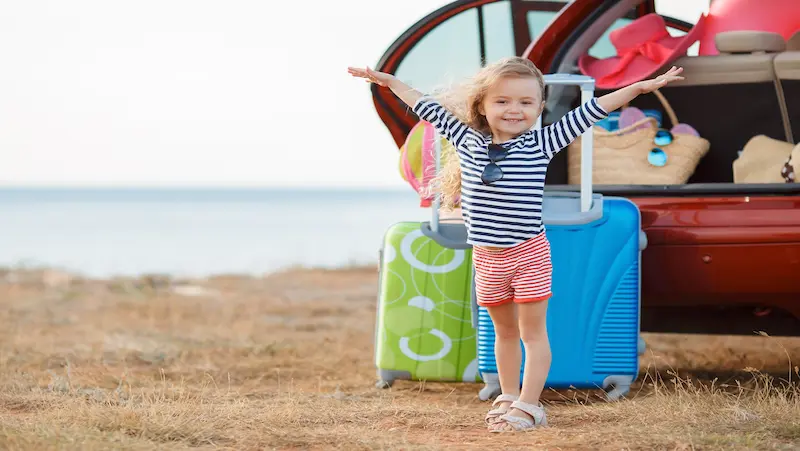
Water is a great way to cool off on a hot day, and it can also be a lot of fun. Here are some water-based activities that are perfect for hot days and family fun:
- Water balloon fights are a classic summer activity. Fill up some water balloons and have a blast splashing your friends and family.
- Sprinkler games are another great way to cool off. Set up a sprinkler in your yard or park and play some games like tag or freeze tag.
- Pool activities are always a hit. Swim laps, play water volleyball, or just float around and relax.
- Water slides are a lot of fun, but they can be dangerous. Make sure to supervise children closely when they are using water slides.
- Water toys can add a lot of fun to water play. There are all sorts of water toys available, from simple buckets and balls to more elaborate inflatable toys.
Water Safety Tips
- Always supervise children when they are in or near water.
- Never leave children unattended in a pool or bathtub.
- Teach children how to swim and how to float.
- Be aware of the dangers of rip currents and other hazards.
- Check the water temperature before entering the water.
- Avoid drinking alcohol before or while swimming.
Water Games for Different Skill Levels
- Water balloon fights are a good game for all ages.
- Sprinkler games are a good game for young children.
- Pool activities are a good game for all ages.
- Water slides are a good game for older children and adults.
- Water toys can be enjoyed by people of all ages.
No matter what your skill level, there is a water activity that is perfect for you. So get out there and have some fun!
Additional Tips
- If you are playing water games in the sun, be sure to wear sunscreen and reapply it often.
- Bring a towel to dry off after you are done playing in the water.
- Have a first-aid kit on hand in case of any injuries.
- Have fun!
Exploring Local Treasures: Family-Friendly Outings
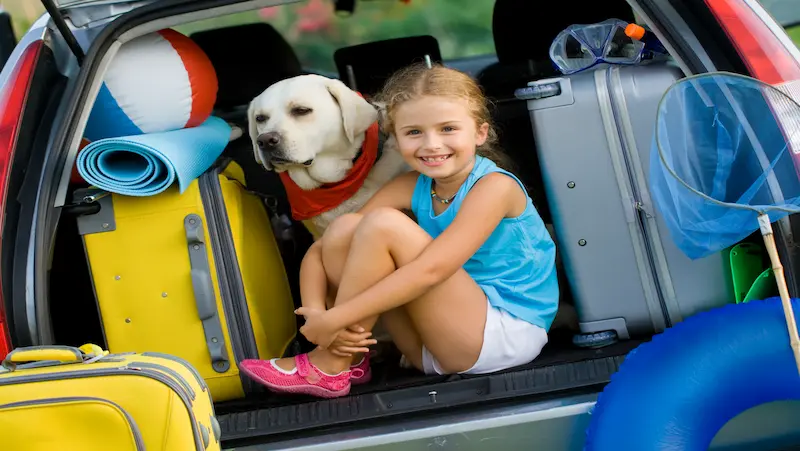
There are many local treasures that offer opportunities for outdoor exploration and family bonding. Here are a few ideas:
- Botanical gardens: Botanical gardens are a great place to learn about plants and flowers from all over the world. They often have beautiful gardens, greenhouses, and trails to explore. Some botanical gardens even have special events, such as festivals, concerts, and workshops.
- Nature reserves: Nature reserves are protected areas of land that are home to a variety of plants and animals. They offer a chance to see wildlife in their natural habitat. Many nature reserves have hiking trails, picnic areas, and educational programs.
- Zoos: Zoos are a great place to see animals from all over the world. They often have educational exhibits and programs that teach visitors about the animals. Some zoos even have special events, such as feedings, talks, and demonstrations.
Here are some of the benefits of exploring these areas with your family:
- Learning: Children can learn about plants, animals, and the environment by exploring these areas.
- Exercise: Exploring these areas can be a great way to get some exercise.
- Bonding: Spending time outdoors with your family can help you bond and create memories that will last a lifetime.
- Relaxation: Exploring these areas can be a great way to relax and de-stress.
If you’re looking for a fun and educational activity for your family, consider exploring one of these local treasures. You’re sure to have a great time!
Here are some additional tips for planning a family-friendly outing to one of these areas:
- Check the weather forecast before you go. You don’t want to be caught in the rain or heat.
- Wear comfortable shoes. You’ll be doing a lot of walking.
- Bring a water bottle and snacks. You’ll need to stay hydrated and energized.
- Pack sunscreen and insect repellent. Protect yourself from the sun and bugs.
- Be prepared for anything. The weather can change quickly, so be prepared for rain or shine.
With a little planning, you can have a great time exploring these local treasures with your family.
Rainy Day Alternatives: Outdoor Activities Indoors

here are some rainy day alternatives to outdoor activities:
- Indoor Camping: Create a cozy indoor campsite in your living room or bedroom. Gather some blankets, pillows, and flashlights, and set up a tent or sleeping bags. You can even roast marshmallows over a candle or make s’mores.
- Nature-inspired Crafts: Make some nature-inspired crafts to bring the outdoors in. You could paint rocks, make birdhouses, or create a terrarium.
- Rainy Day Scavenger Hunt: Hide some objects around your house or apartment, and then give your kids a list of clues to help them find them. This is a great way to get them moving and exploring.
- Water Play: Even though it’s raining outside, you can still have some water fun indoors. Fill up a bathtub or kiddie pool with water, and let your kids splash around. You could also play with water balloons or squirt guns.
- Storytime: Curl up with a good book and let your imagination wander. You could read a story about a rainy day, or choose a book that takes place in nature.
- Game Night: Gather up some board games or card games, and have some fun with your family or friends. This is a great way to pass the time on a rainy day.
- Arts and Crafts: Get creative with some arts and crafts. You could paint, draw, or make jewelry. There are endless possibilities!
Safety First: Tips for a Safe and Enjoyable Outdoor Experience

The outdoors is a great place to relax, have fun, and explore. However, it’s important to take safety precautions to ensure that your outdoor experience is enjoyable and safe. This article will provide you with essential safety guidelines for outdoor activities, including sun protection, hydration, insect repellent, and first aid tips. We will also discuss how to manage risks and ensure a positive and secure outdoor experience for the whole family.
Sun Protection
One of the most important things you can do to protect yourself from the sun is to wear sunscreen. Sunscreen should be applied liberally to all exposed skin, and it should be reapplied every two hours, or more often if you are sweating or swimming. You should also wear a hat and sunglasses to protect your face and eyes from the sun.
Hydration
It’s also important to stay hydrated when you are outdoors. Drink plenty of water, even if you don’t feel thirsty. You can also drink sports drinks or other fluids that contain electrolytes.
Insect Repellent
Insect repellent can help to protect you from insect bites, which can transmit diseases such as Lyme disease and West Nile virus. Choose an insect repellent that contains DEET or picaridin. Apply the repellent to exposed skin and clothing, and reapply it according to the instructions on the label.
First Aid
It’s always a good idea to pack a first aid kit when you go outdoors. This will help you to treat minor injuries, such as cuts, scrapes, and insect bites. You should also know how to perform CPR and other basic first aid procedures.
Managing Risks
There are a number of risks associated with outdoor activities, such as getting lost, getting injured, and encountering wildlife. However, there are a number of things you can do to manage these risks.
- Plan your trip carefully. This includes knowing the route you will be taking, the weather forecast, and the potential hazards in the area.
- Let someone know where you are going. This will give someone a way to find you if you get lost.
- Be aware of your surroundings. This will help you to avoid hazards and to stay safe.
- Take the proper gear. This includes gear for the weather, for injuries, and for wildlife encounters.
By following these safety guidelines, you can help to ensure that your outdoor experience is safe and enjoyable. By managing risks and taking the proper precautions, you can help to protect yourself and your family from harm.
Additional Tips
- Stay on designated trails. This will help you to avoid getting lost and to minimize your impact on the environment.
- Leave no trace. This means packing out all of your trash and respecting the natural environment.
- Be respectful of wildlife. Do not feed or approach wild animals, and give them plenty of space.
- Be aware of the weather. Check the forecast before you go outdoors, and be prepared for changes in the weather.
- Have fun! The outdoors is a great place to relax, have fun, and explore. So get out there and enjoy it!
Conclusion
In conclusion, bonding beyond the four walls of our homes through fun outdoor activities is an excellent way for kids and parents to create lasting memories and strengthen their relationships. Whether it’s exploring nature, engaging in team sports, or embarking on exciting adventures, the possibilities are endless. These activities not only promote physical fitness and well-being but also foster communication, teamwork, and problem-solving skills. So, let’s venture outside, breathe in the fresh air, and discover the joys of bonding through thrilling outdoor experiences. Together, parents and kids can build a strong bond that will last a lifetime while creating a world of endless fun and adventure.
Join the revolution in education with Brightchamps. Our courses in robotics, coding, and financial literacy empower kids to become confident and capable learners.
Frequently Asked Questions
Outdoor activities are important for kids as they promote physical exercise, improve motor skills, enhance sensory development, boost creativity, foster social interactions, and help children connect with nature.
Outdoor activities benefit your child’s physical health by providing opportunities for exercise, improving cardiovascular fitness, enhancing coordination and balance, strengthening muscles, and promoting overall well-being.
Some examples of outdoor activities suitable for kids include playing in the park, riding bicycles, swimming, hiking, gardening, playing sports like soccer or basketball, camping, and engaging in nature exploration.
To motivate your child to participate in outdoor activities, you can make them fun and engaging by involving their friends, setting achievable goals, offering rewards or incentives, emphasizing the benefits, and being a positive role model by participating yourself.
When planning outdoor activities, consider safety considerations such as using proper protective gear, choosing age-appropriate activities, supervising young children, being aware of weather conditions, staying hydrated, and teaching your child about stranger danger and basic first aid.
If your child prefers indoor activities over outdoor ones, you can find a balance by encouraging indoor activities that involve physical movement like dance or yoga, setting limits on screen time, introducing outdoor activities gradually, and finding activities that align with their interests and hobbies.
Learning can be incorporated into outdoor activities by turning them into educational experiences. For example, you can teach your child about plants and animals while hiking, explore science concepts through nature experiments, practice math skills through scavenger hunts, or encourage reading by having them read signs or interpret maps while outdoors.


 We are an army of educators and passionate learners from BrightChamps family, committed to providing free learning resources to kids, parents & students.
We are an army of educators and passionate learners from BrightChamps family, committed to providing free learning resources to kids, parents & students.








